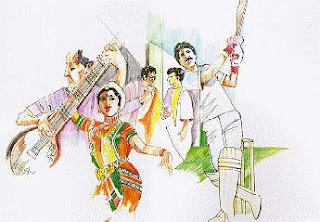
India has a rich cultural heritage, and just managed to preserve established traditions and history of the Indian immigrants were always the attackers and the two practices, traditions and ideas that is absorbed. India and a number of cultural practices, language, customs and monuments are examples of centuries of co-mingling.
India's culture in India, more significantly, perhaps, have been derived from the Islamic Mughal Empire - inspired by the history of architecture, examples of famous monuments such as Taj Mahal and India as well.
All parts of this tradition of centuries of Indian religious and social culture, fusing elements of influence on the merger. Individual values and traditions of different places and different variations of your wealth.
Indian culture and geography of the West of deserts is clearly wet heat and cold, distant view of the southern Peninsula and the Himalayas, the eternal snows are different from agriculture, glorify, and the eastern plains and the forests in the central area of the divinity.
50, Indian clothing, and food sources that differ in location. India and Indian society and culture the most, is a variety of multilingual and multicultural. There is a belief in the life of society is an integral part of various religious organizations.
The value of education in each layer, and the traditional Indian family values are highly respected members of the Nuclear family system is considered to be the beginning of an economic partnership. The relationship between fine art and architecture of the temple for the Hindu religion as expressed in the Rush. Thu, architects, social, and economic strength is built on religion.
Thousands of skilled artisans and sculptors and artists as great and complex in detail all aspects of human intelligence to create a symphony of stone, with their contribution. Giant and Halebid temples in Karnataka carry friezes based on epic poems, Khajuraho, they represent an exuberant eroticism, and we are both absolutely clear that all of the pervasiveness of the Indian History.
With the introduction of Islam, architecture has a deep and wide into a bow, onion, conclusions, minarets and jalis of heavy use. During this time the Taj Mahal, one of the most famous monument, the North India. Instead of the floral and calligraphic representation of the human form. Ways to separate Quarters roof gardens with water features and around the buildings is a matter of choice, is made from marble and red sandstone.
Royal auspices, Indian literature, music and dance traditions of poetry and a new theme into the plant. Music and dance, especially in South India, is also an intrinsic part of the temple of the gods, and culture. Joy's life celebration service was held in many different ways. That the melting of many religions, India has a rich variety of many of the most celebrated festivals.
The practices of the famous and popular Hindu Diwali, the festival of Holi, and Dussehra are. Pongal in Tamil Nadu and Kerala, there are all the religions that celebrate the harvest festival of Onam.
Hundreds of the most common Indian dances, and the King, his details are only the expression of the tribal leaders. Simple folk dances and Indian tribes, and the joy of a show. Dancing to celebrate the arrival of the child or the marriage is celebrated by people everywhere. Indian culture is a key - or at least the most simple dance steps and movements.
Indian Culture and Western Culture
India's diversity has inspired many writers to pen their perceptions of the country's culture. These writings paint a complex and often conflicting picture of the culture of India.
According to Rosser, an American sociologist, Americans of South Asian origins feel the Western perception of the culture of India has numerous stereotypes. Rosser notes that the discourse in much of the United States about the culture of India is rarely devoted to independent India. People quickly make sweeping and flawed metaphysical assumptions about its religion and culture, but are far more circumspect when evaluating civil society and political culture in modern India. It is as if the value of South Asia resides only in its ancient contributions to human knowledge whereas its pathetic attempts to modernize or develop are to be winked at and patronized. Rosser conducted numerous interviews and summarized the comments. The study reports a stark contrast between Western perceptions of the culture of India, versus the direct experience of the interviewed people.







33.jpg)




Post a Comment